FOUR years ago I wrote a story about the Myanmar cattle industry with the heading “Myanmar’s Enigmatic Beef Cattle Industry: Please ring back in 2026.”
I have just spent two weeks in Myanmar (formerly Burma) in mid-January 2020 and must review my predictions for the future of the cattle industry as a lot has happened in the last four years.
In my first article I presented the following summary of the main problems that needed resolution before the live cattle trade with China could commence in earnest:
- Solve all the ethnic disputes across Myanmar to ensure free movement of people and trade goods throughout the country and across national borders;
- Eradicate Foot and Mouth Disease (FMD) which is endemic in Myanmar;
- Mechanise Burmese agriculture so that diesel hand tractors take the place of draft cattle;
- Convince the new Burmese government and general population that after their 54 year bitter struggle for democracy, embracing Chinese offers of trade and infrastructure will not automatically lead to a new form of domination by the overwhelming commercial and political muscle of China.
You can put a line through the barriers listed above as they are all now resolved to a point where trade has already commenced in significant volumes.
I was told by a number of sources that during the period of three months prior to our visit in January 2020 that the average daily live exports into China through the Shan state border crossing of Muse were in the order of 1000 slaughter cattle per day.
Presumably, the law prohibiting the export of live cattle has also been revoked.
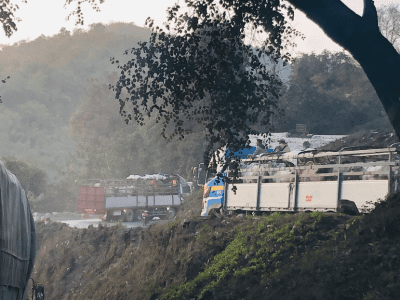
Large, modern trucks on good roads are transporting high quality slaughter cattle out of Myanmar through the Shan state border crossing point of Muse/Ruili.
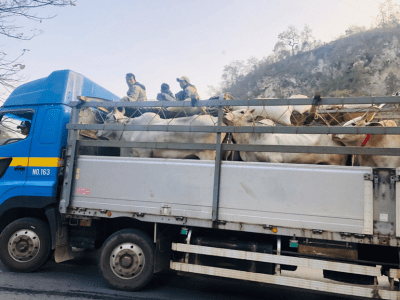
Burmese cattle have been bred to be big and strong draft animals so the genetics for slaughter cattle are excellent. It was very difficult to find an accurate quote for these cattle but the best information I could get was that they were selling for around AUD$2 per kg live weight so heavy slaughter ox were probably selling for close to AUD$1,000 per head. If that is correct then the current daily trade for live cattle exports into China could be worth in the order of AUD$1 million per day.
Ethnic border disputes
If you examine the map below you will see that Myanmar is the only country that borders China and has a large cattle herd (about 15 million head) with surplus stock available for sale.
The majority Buddhist population eat very little beef.
The presence of this high quality protein resource in an adjoining country connected by efficient road and rail links to the bulk of the Chinese population is of enormous strategic importance.
While the Myanmar government and their ethnic rebel groups on their own have not been able to resolve their differences for over 50 years, I am sure that once the Chinese government decided that it was in their national interest to achieve a secure trade route through the disputed territory, I expect that they have played a decisive role in achieving a workable crossing protocol by applying enough carrots and sticks to both sides in order to deliver a cross-border trade agreement which is beneficial for all parties.
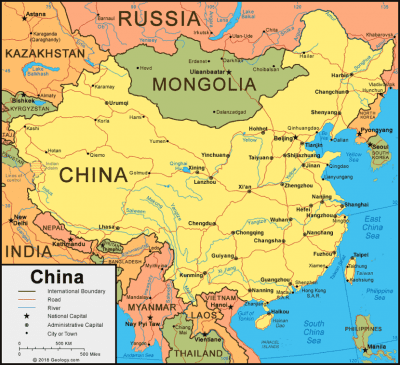
The Muse/Ruili border crossing is located on the red line showing the road link between Mandalay and Kunming.
Foot and Mouth Disease
The disease risk has been dealt with through a combination of vaccination and quarantine on arrival a short distance inside the Chinese border with vaccinated, disease free stock only travelling onwards into China as far as Kunming where they are slaughtered in newly constructed facilities.
Processed beef can then be distributed throughout China with minimal disease risk.
Mechanisation: The “Chinese Buffalo”
Burmese agriculture is now well and truly mechanised with the introduction of the “Chinese Buffalo” which is the local name for the wide range of imported Chinese mechanical equipment which has dramatically (but not entirely) reduced the demand for draft power.
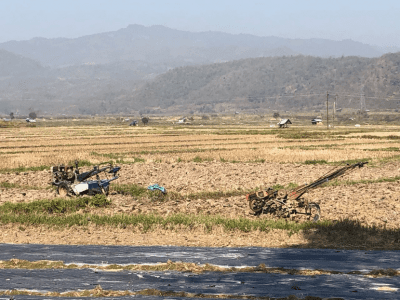
The main “Chinese buffalo” implement is the hand tractor. During 2 weeks of travel through the Burmese country side we did not see a single animal pulling a plough although some are still used for general lighter freight duties on the local roads around the villages.
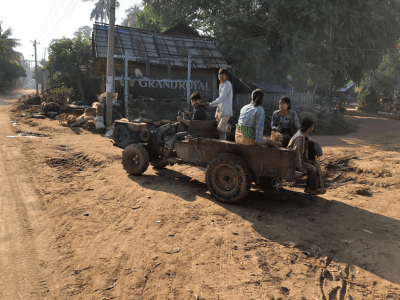
This style of converted hand tractor does most of the medium load, short distance work when the implement is not required for ploughing.
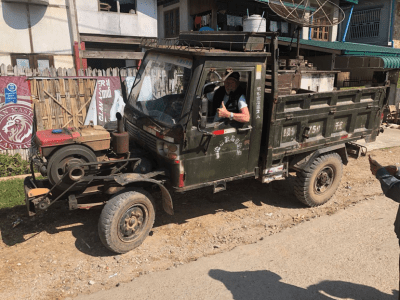
For heavier work, a larger “Chinese buffalo”, this light truck with a diesel motor is extremely popular, cheap and very efficient.
Myanmar Chinese relations
The final item on the list of problems needing to be solved was, how to convince the Burmese government and people that increased trade with China is in their best interests.
China sees Myanmar as one of its most important strategic neighbours which has already assisted with access for oil and gas pipelines through the middle of the country from Muse to the Bay of Bengal as well as many other initiatives.
While we were travelling through the north east of the country in January, President Xi Jinping made a very high profile visit to Myanmar with discussions focusing largely on mutually beneficial trade and cooperation.
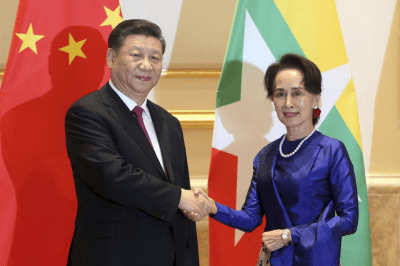
Photo from the internet: President Xi Jinping meeting with Aung San Suu Kyi at the Presidential palace in Nay pyi taw, Myanmar on 17th January 2020
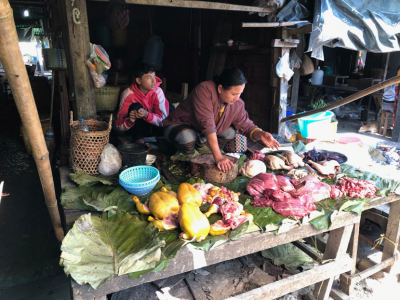
A wet market stall in the small, far northern Irrawaddy river village of Katha, where the famous author, George Orwell was a colonial policeman in the early 1920’s. Note beef is on the menu here as well as chicken and duck. The fresh chicken is massaged with Turmeric powder to give the skin a nice yellow colour. The beef price here was Kyat 18,000 per viss. 1 viss = 1.6kg. 1,000 Kyat = about AUD$1 so 1 viss of beef costs about AUD$18 so 1kg of beef in northern Myanmar costs about AUD$11.25. The cost in Mandalay and Yangon wet markets was about 25 percent less.
When the Australian herd is at its full strength of about 30 million it produces around 9 million head annually for sale or about 30 percent.
Using an assumption that the Myanmar herd is only half as productive then the annual number of animals for sale might be in the order of 15 percent of 15 million, or 2.25 million head. With only a small amount consumed domestically there appears to be scope for a sustainable live export trade to China of about 2 million head annually.
Myanmar is a magnificent country, well worth a visit for travellers wishing to see something very different to the usual Asian destinations but at the same time quite safe.
The potential for the growth of agriculture is staggering with an enormous fertile valley running down the centre of the country serviced by an extensive network of navigable rivers providing low cost freight services for people and goods.
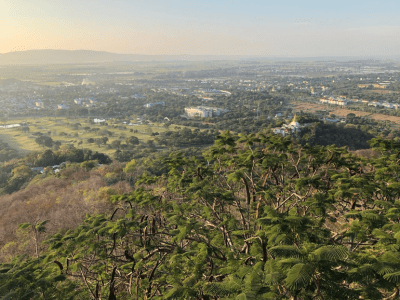
The city of Mandalay is built on the northern end of the enormous fertile plain where Irrawaddy and the Chindwin rivers meet then flow all the way to the large delta in the south near Yangon.
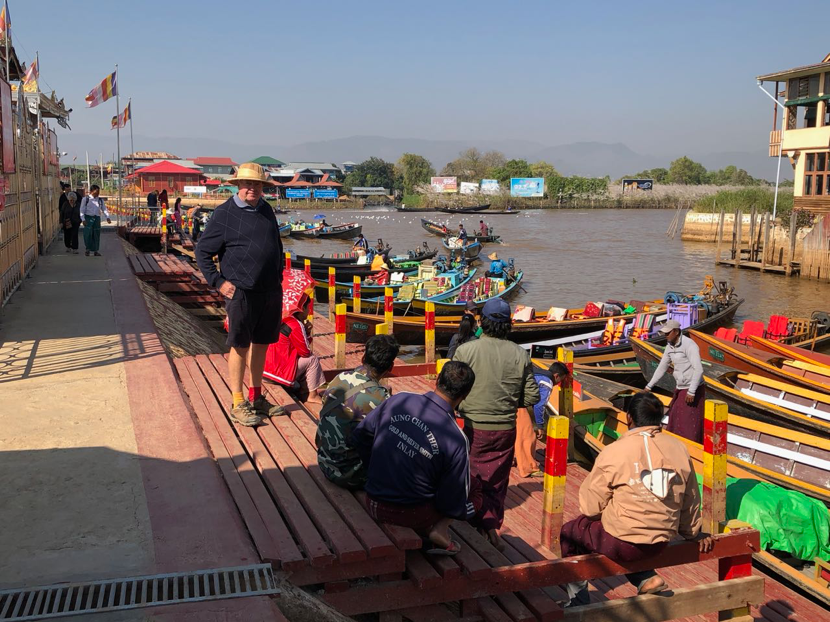
Tourism is booming with an endless number of fascinating places to visit. This jetty is at the wet market “car park” in the middle of Inle Lake in the north east.
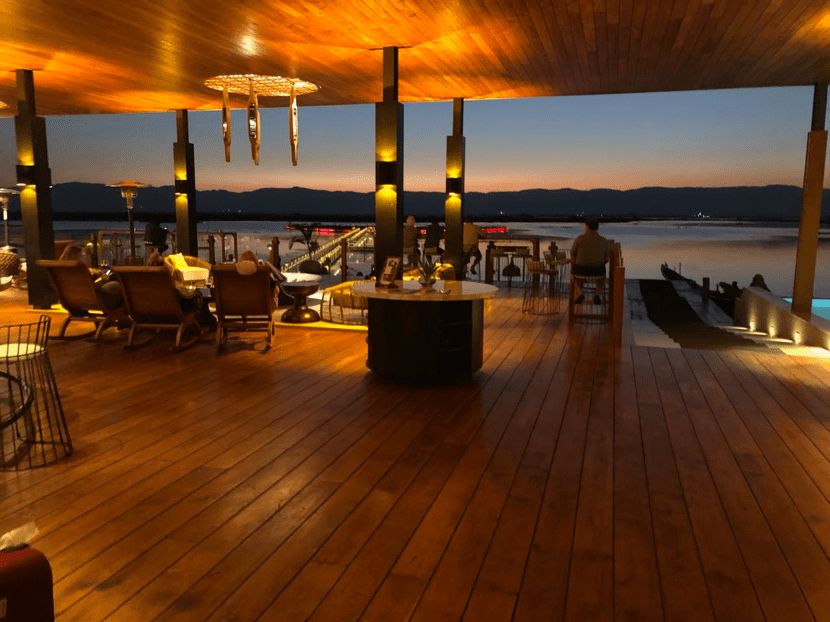
Accommodation ranges from this outstanding 5 star Sofitel resort on the edge of beautiful Inle lake to back-packer style and everything in between.

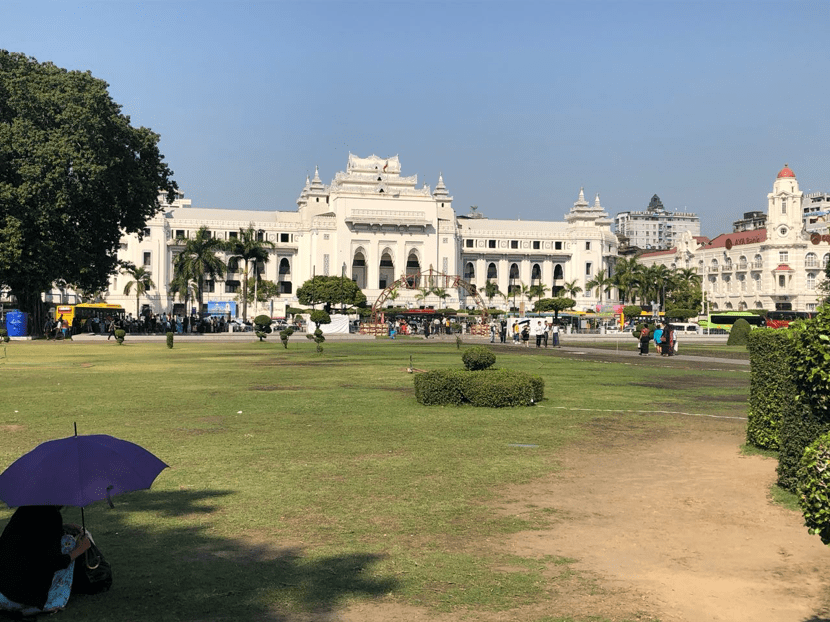
Interesting article, I question the reliability of the supply. Usual MO for China.
Dear Ross,
many thanks for the data and the line of argument. Your optimism is admirable, considering the thicket of struggles which beset MYA, and more intractable, MYA-PRChina relations.
[I’ve been working these last few years in Shan, Mon, Rakhine, Naypyitaw, Yangon, on rural development and the ways and means for people’s livelihoods].
Yes, the natural potential is huge; but just about every other factor mitigates against commercial development– look at the websites of Auscham Chamber of Commerce in YGN, even more on EuroCham in YGN… those people live the daily hassles and uncertainties ‘twixt the political and the commercial. For the root causes in the thicket, read “Between China and India” by Thant U.
2020 was going to be the definitive crunch year of MYA governance; especially, can they achieve a succession of government through a credible electoral process? In January, it was looking shaky [see ‘FRONTIER” magazine from YGN]; now COVID-19 effects, and skirmishes in Arakan, Kachin, Wa, Shan, Kayin and maybe others, challenge the political process.
In addition to the macro/national level, the venality of local authorities often cripples the transactions of trade and verification of quality etc….. they need a mountain of your ‘carrots’. …. These factors discourage Aussie and Fr and Israeli and Canada and Polish visitors/prospectors whom I have talked with…. but for the Chinese movers, these are the MOST opportune times to pull together the resources, investor-gamblers, market chains and consumers.
Please send me a hello, I am in Melbourne, and in the time of Corona, have time to think and research more deeply
Gday Don, I try to write from an optimistic viewpoint so my glass is always half full when I present a story. I did see a little of the crazy internal struggles, enough to know this is not a place for an outside investor. As I see it China is the only one with enough power over all parties to be able to pick the low hanging fruit but even they cant get some of the major projects they want such as road and rail to the Andaman sea as there are so many obstacles that even they cant manage it. It seems the population are getting a little more personal wealth and better living conditions but the long term dysfunctional political/military/ethnic/drug/warlord situation seems to be far too entrenched to ever overcome. I am spending the corona period on cattle ships and I am now in the south china sea on the way back for another load in Townsville. Email is my only comms onboard so happy for an email discussion. regards Ross
China’s Belt and Road programme will eventually mean that they can choose to only trade with countries that are :
A. Essentially client states, or
B. Have resources that cannot be obtained from “A”
Which category is Australia going to be in? “A” seems unlikely. If “B” then what do we have to trade that China cannot obtain elsewhere at less cost, both politically and economically?
Their two main rivers flow out of China!!! Would be a worry into the future.
And I am trying to remember the significance of Mandalay through a song and (British?) involvement?
A very interesting geography, history and transport lesson Ross. May I ask what the green, yellow, pink and orange colours mean on the map?
I think that the colours a function of the https://en.wikipedia.org/wiki/Four_color_theorem (& China being yellow in this case).